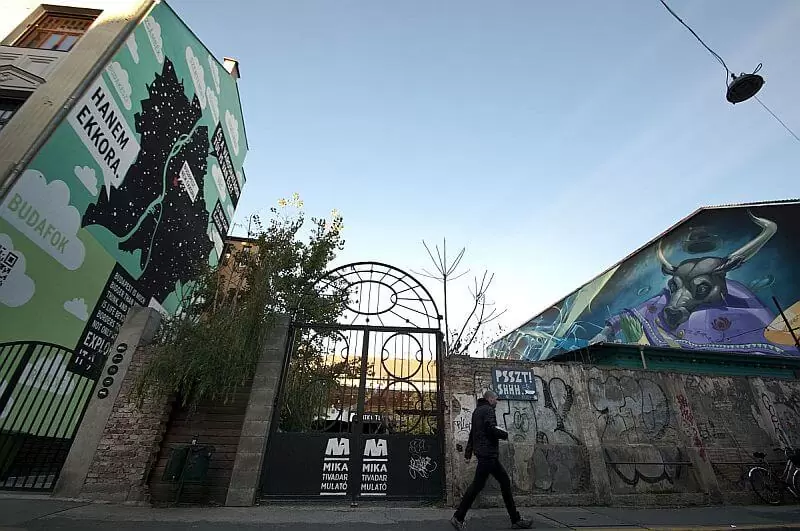
06 Sep Explore the Jewish Quarter of Budapest
If you’ve only got a weekend in Budapest, then one of the neighbourhood you must visit is the Jewish Quarter. While it doesn’t have the historical pedigree of Prague’s atmospheric Jewish Cemetery and medieval narrow streets, you’ll still find plenty of interesting snippets of history among the shabby chic lanes of this gentrified district.
Mixing up synagogues and Yellow Star Houses with quirky design shops and eccentric ruin bars, this neighbourhood is one of the most exciting places in the city.
Exploring the Jewish Heritage of the VII District
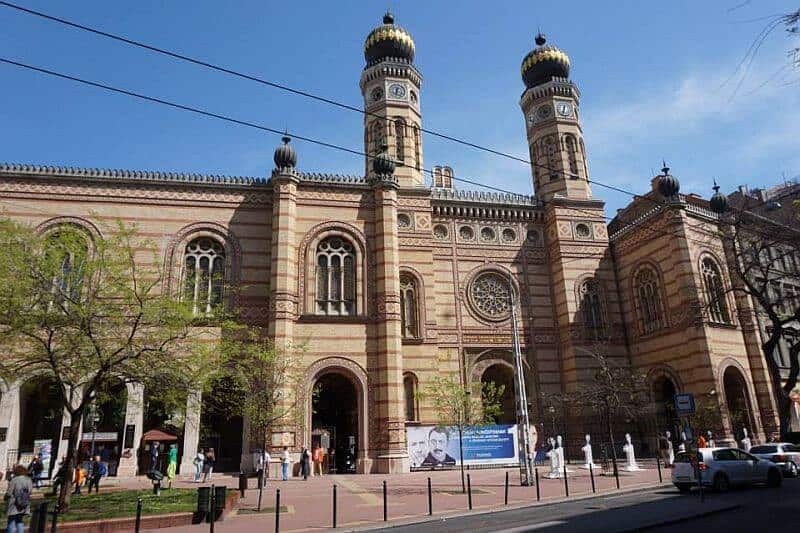
Dohány Street Synagogue Budapest – photo: bzsh.hu
Budapest’s first Jewish Quarter actually law across the river, where the community thrived since the rule of King Béla IV in the 13th Century. Following the Ottoman occupation, the Habsburgs deported many of the Jews, and for centuries they could not live inside the city limits. When Budapest unified Buda, Pest and Óbuda, in 1873, there was already a substantial population in the city. The area known as the Jewish Quarter today sprung up outside Pest’s city walls in the 18th century. The synagogues in the district reflect different aspects of Budapest’s Jewry.
The main synagogue in Dohány street is the largest synagogue in Europe, and the second-largest in the world, belongs to a group known as the Neolog Jews, a uniquely Hungarian branch of Judaism that wanted to modernize the religion with the intention of integrating into Hungarian society.
The art nouveau synagogue on Kazinczy Street, despite drawing its artistic influences from Hungarian folk art, actually, houses the Orthodox community. The third synagogue on Rumbach Sebestyén street served the community known as the ‘status quo ante’, after refusing to join either community or take part in the rift.
Each synagogue is aesthetically different, with the Great Synagogue and the Rumbach Sebestyén Synagogue sporting neo-orientalist styles of their own, while the Kazinczy Street Synagogue follows a more art nouveau look.
Stepping Into the Former Ghetto
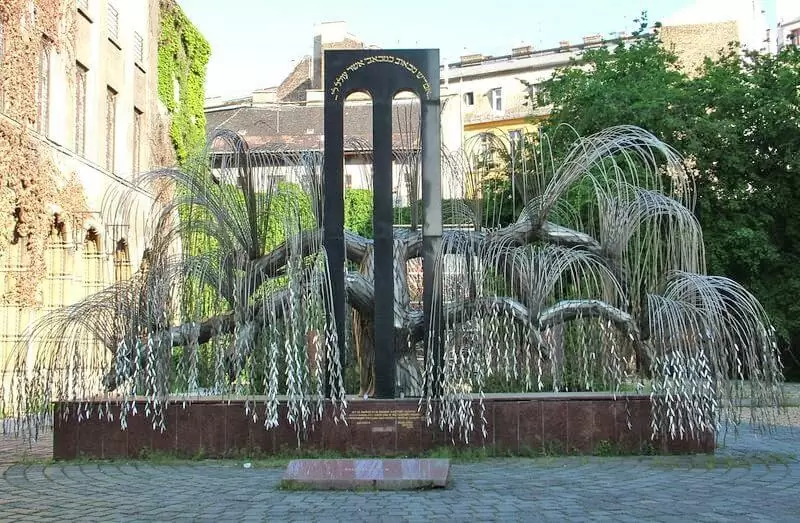
Holocaust memorial – photo: info.kazimir.hu
During the summer of 1944, over 2000 houses in Budapest were allocated the Yellow Star label, where the cities Jews had to relocate to in preparation for deportation. Due to the density of the Jewish community in the VII District, many of these houses were found in the Jewish Quarter. However, in the winter of the same year, the ghetto came about, which enclosed 70,000 Jews in a space less than a square mile.
While parts of it were closed in by a wall, much of the border was made up of the walls of the houses themselves and wooden planks. But if you take a walk down Király utca, take a peek into one of the houses close to Gozsdu udvar, you can see the memorial wall that has been rebuilt by the original stones to commemorate the old ghetto wall.
The Quarter Today – ruin bars, street food and street art
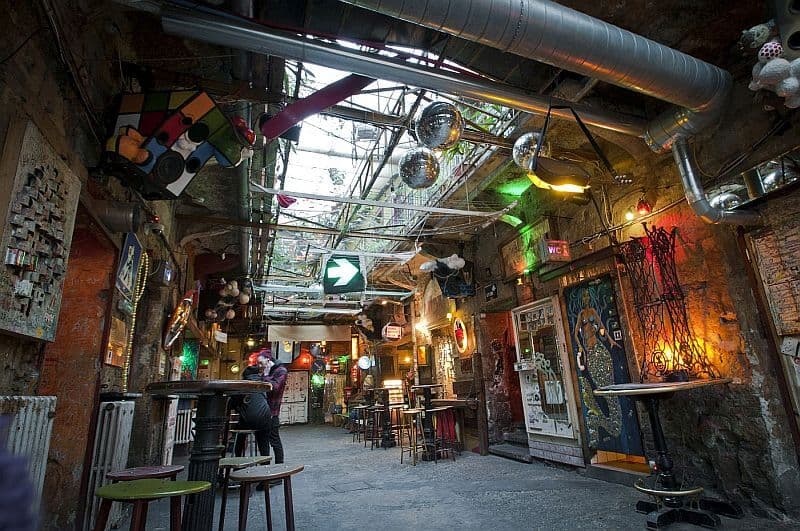
Szimpla kert ruin bar – photo: wordpress-312070-2951036.cloudwaysapps.com
For decades, the Jewish Quarter lay in disrepair with crumbling houses and buildings that were considered for demolition, but ever since Szimpla Kert, the first ruin bar, set up shop, the quarter changed.
Embracing its shabby architecture, the ruin bar scene set the tone for this now. You’ll find the most famous ruin bars here, like Szimpla Kert, Fogas Ház and Instant, as well as lesser-known places like Kőleves Kert and new-wave ruin bar Mazel Tov.

Street art in the Jewish Quarter – photo: wordpress-312070-2951036.cloudwaysapps.com
Along the trendy streets adorned with street art and murals on the once empty firewalls, you’ll find quirky design shops, like Printa, which are loved for their silkscreen prints and upcycling. Another good spot is the Szimpla Design shop next to the famous namesake ruin bar.
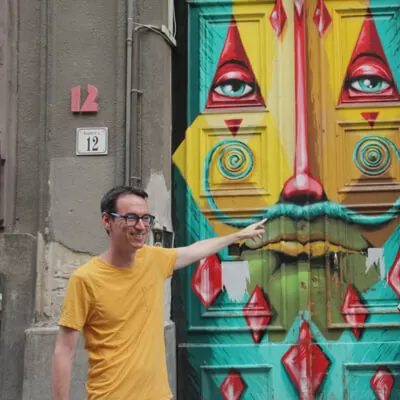
Join our Street Art Tour
Discover Budapest’s street art scene and learn about the city’s contemporary culture and history through vibrant murals and street art pieces on a small-group tour.
“Amazing walking tours with great insights”
SAPHINA (USA), January 2017
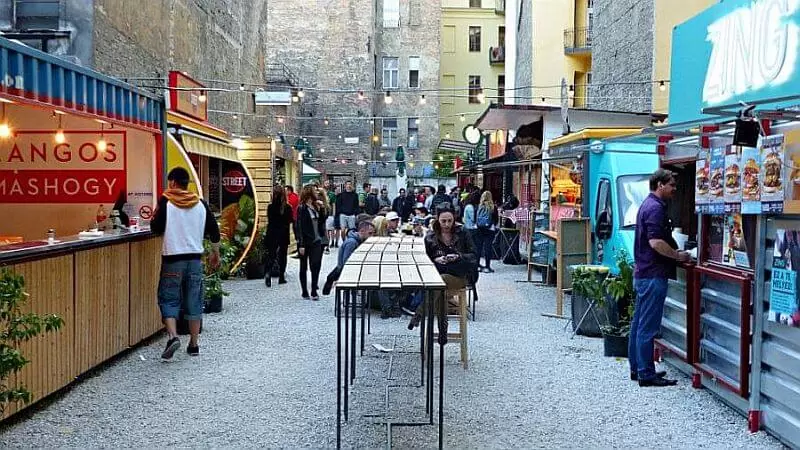
Karaván street food garden – photo: flashpackingduo.com
When it comes to to eating and drinking, the VII District also has plenty of place to check out, especially when it comes to the street food scene. If you want a selection of street food in one place, than Karaván, located next to Szimpla, has pretty much everything you’re looking for, from vegan snack to fried cheese, sausages and even lángos.
MAP OF THE JEWISH QUARTER BUDAPEST
PIN THIS FOR LATER
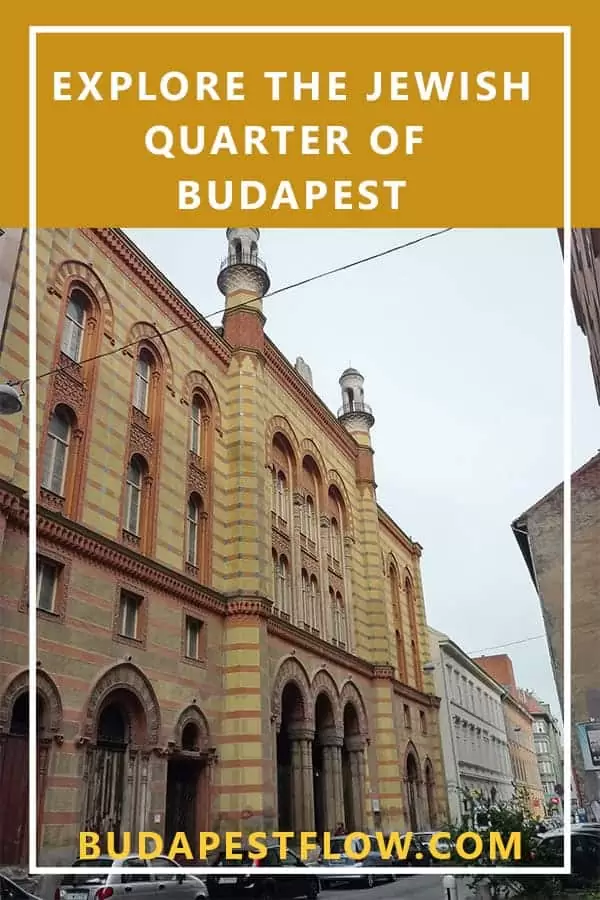
RELATED TOURS
Join this small-group tour with a local guide to explore one of the most exciting neighborhoods of Budapest with ruin pubs, street art, design shops and street food.
Discover Budapest’s street art scene and learn about the city’s contemporary culture, history and politics through these vibrant murals and street art pieces.


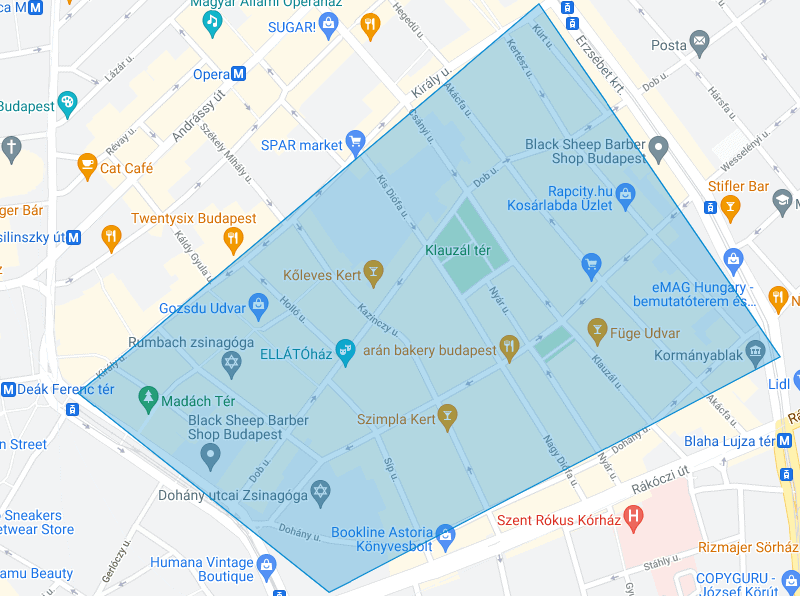
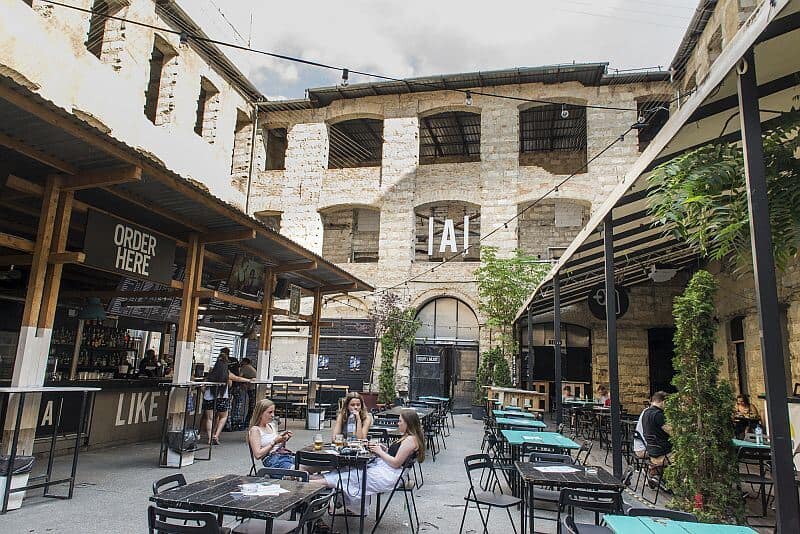
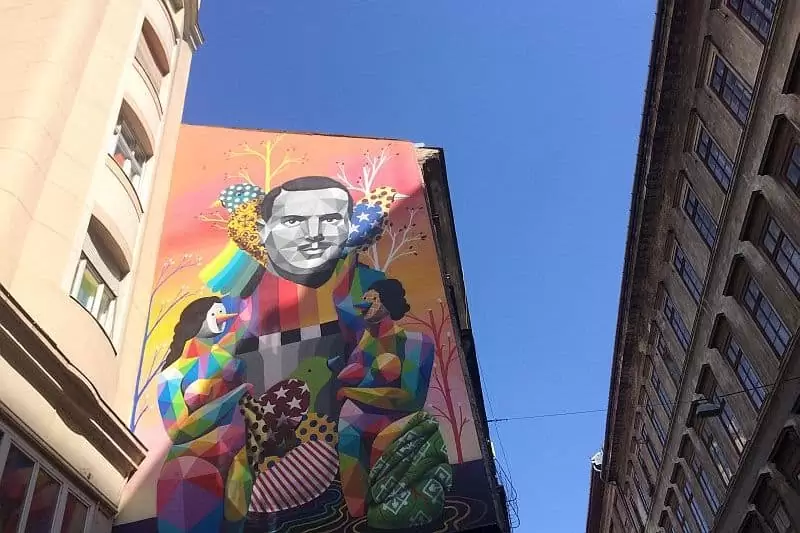
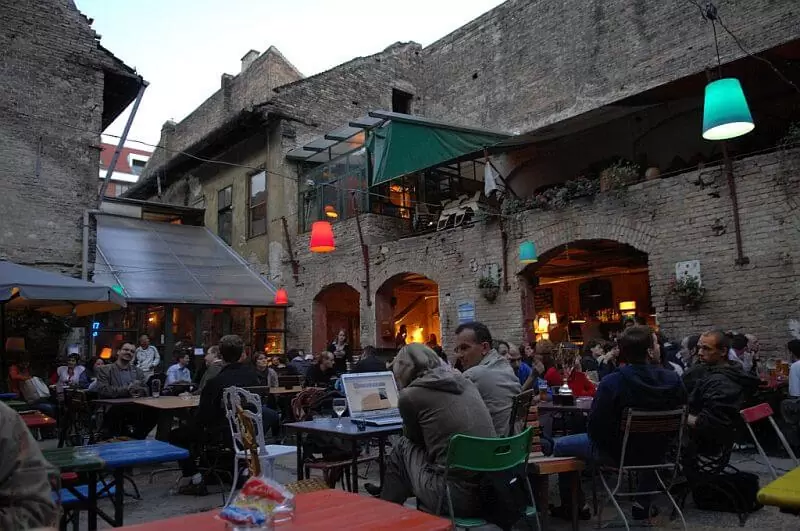
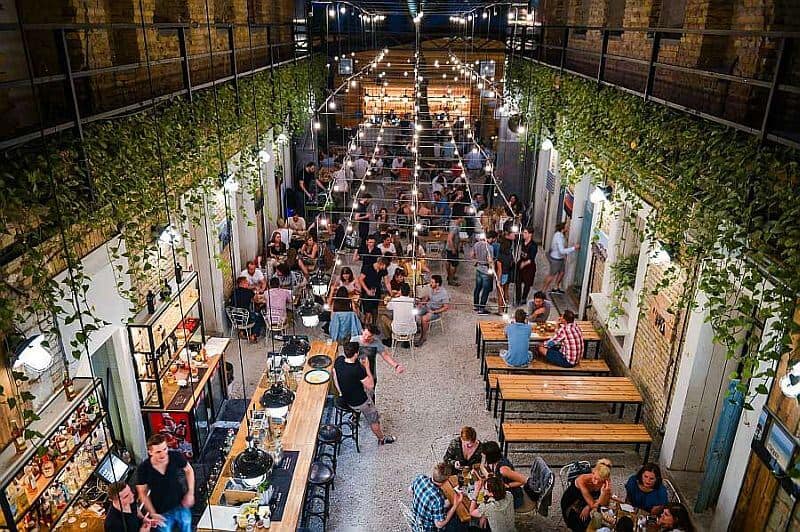
Sorry, the comment form is closed at this time.